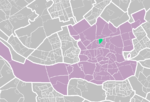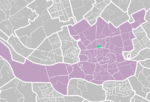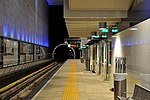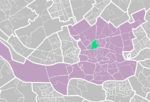Bergpolder
AC with 0 elementsNeighbourhoods of RotterdamSouth Holland geography stubs

Bergpolder is a neighborhood of Rotterdam, Netherlands in Rotterdam-Noord. The neighborhood was laid out between 1930 and 1935 and named after the polder of the same name. The Bergpolderflat built in 1933, now a national monument, is the main attraction of the neighborhood, together with the Sportfondsenbad Noord (swimmingpool) from 1937 on the Van Maanenstraat. The Sophia Kinderziekenhuis (Sophia Children's Hospital), founded in 1863 was relocated in 1936 to the northern border of the Gordelweg district, and moved to a new building next to the Erasmus Medical Center in 1994.
Excerpt from the Wikipedia article Bergpolder (License: CC BY-SA 3.0, Authors, Images).Bergpolder
Doctor de Visserstraat, Rotterdam Noord
Geographical coordinates (GPS) Address Nearby Places Show on map
Geographical coordinates (GPS)
| Latitude | Longitude |
|---|---|
| N 51.935555555556 ° | E 4.4663888888889 ° |
Address
Doctor de Visserstraat 62A
3038 TV Rotterdam, Noord
South Holland, Netherlands
Open on Google Maps









